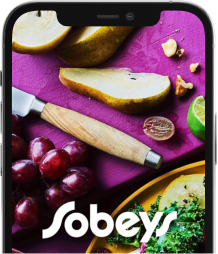Protein is on everyone’s mind for a good reason: Your body needs this macronutrient for necessary functions, including the building and fixing of cells and tissues.
Everyone consumes protein through their diets, and it’s often the focal point of the plate at mealtime. But the amount of protein you need depends on individual factors like your age, weight, activity level, body composition and health. For example, babies and kids need less than adults, while pregnant women need more1. To find out how much you require, speak with a medical professional about your specific needs. No matter who you are or what diet you choose, eating a variety of foods that contain protein can help you easily meet your daily requirements.
Meat eaters
When you think about protein, meat likely comes to mind. The great news is that animal protein has a complete set of the 20 amino acids your body requires, so you’re getting them all in one easy package2. Though carnivores have a lot of choice, menu planning can become a repetitive cycle. Here’s how to work some fresh inspiration into your weekly meals.
- Beef: Steak and roast beef are great, but you can save time and money by choosing quick-cooking cuts. Ground beef works in many dishes, from classic meat loaf to easy skillet lasagna to spicy chili. Stir-fry strips are ideal for a weeknight stir-fry, and stewing cubes make stew and hearty soup simple.
- Pork: Tenderloin, chops, medallions and ground pork are tasty and easy to cook. Peanut-Crusted Pork Tenderloin delivers protein from both nuts and meat—how simple is that? For a one-dish dinner, try a skillet pork chop recipe or a simple Cuban-inspired wrap.
- Lamb: Petite loin chops make an easy meal, as does tender rack of lamb.
- Chicken and turkey: These menu favourites are perfect roasted whole for Sunday dinner, cubed in cubed in chili or curry, or added to everything from cassoulet to fajitas to manicotti.
Bonus: Sprinkling 1 tbsp (15 mL) toasted sesame seeds over your favourite Asian-inspired dishes, like Hoisin Pork & Bok Choy Stir Fry, will add almost two grams of protein to your meal3.
Flexitarians
Flexitarians eat mostly vegetarian foods but consume meat or fish once in a while. People who follow this eating style have lots of room to be creative with their meal choices.
- Fish and seafood: Trout and salmon are easy-to-find, convenient additions to your protein roster—whether you like them grilled or roasted, or in chowder or tacos. One 2 1/2 oz. (75 g) serving of cooked mussels contains almost 18 grams of protein4, and you can have Easy Pesto Mussels on the table in just 15 minutes.
- Eggs: Breakfast isn’t the only time for eggs. Try a quick Eastern-style sandwich for lunch or serve a veggie-laced frittata for dinner.
- Dairy products: Who says dessert can’t count toward your protein intake? Our Maple Berry Parfait is a kid-friendly snack that contains 10 grams of protein per serving – that’s almost as much as two hard-boiled eggs5!
- Beans and pulses: Legumes are delicious and versatile. One cup (250 mL) canned navy beans, for example, contains 21 grams of protein6. Try them in our Braised Navy Beans.
Bonus: Blend 1 tbsp (15 mL) toasted wheat germ into your Banana & Soy Breakfast Smoothie to give it an extra 2 grams of protein7.
Vegetarians
Vegetarians don’t eat meat, but they often eat eggs or dairy products. In addition to these, legumes, nuts and soy products—even seaweed!—can help round out their daily protein intake.
- Nuts and seeds: Enjoy them as is or in nut milks and butters. Nuts and seeds are scrumptious in baked goods (think cookies and breads) and pesto.
- Tofu and miso: Soybean-based tofu takes on the surrounding flavours, so it can be sweet and creamy or savoury and firm. And it’s not just good in dinnertime stir-fries—it works in breakfast and lunch dishes, too. Miso, a fermented soybean paste, is ultra savoury; try it in Homemade Vegetarian Noodles to Go.
- Seaweed: This sea vegetable has 1.7 g of protein per 10 g8. Try crisp nori in our Egg Nori Sushi Rolls.
Bonus: Stir 1 tbsp (15 mL) almond butter or cashew butter into your oatmeal for an extra 3 grams of protein9.
Vegans
Vegans don’t eat any animal products, but they still enjoy a delicious, diverse selection of foods. To make sure your body gets all the amino acids it requires, eat a variety of foods every day, including plant-based meat alternatives.
- Tempeh: Made by fermenting and pressing cooked whole soybeans, tempeh is a chewy, satisfying meat alternative. A 5 oz. (150 g) serving contains 27 grams of protein and is delicious pan- or stir-fried10.
- Seitan: Made from pure gluten flour (also called vital wheat gluten), this meat alternative is another yummy option (just be sure to avoid it if you are eating gluten-free). Slice seitan and use it in sandwiches, stir-fries or salads. It readily takes on strong flavours, so this is the time to break out your favourite sauces and marinades.
- Nutritional yeast: These cheesy-tasting flakes are pure savoury vegan goodness. Sprinkle them over popcorn, pasta or Tomato Soup with Fresh Basil.
Bonus: Top toast with 1 tbsp (15 mL) yeast spread, such as Marmite, for an extra 4 grams of protein11.
Sources:
3 Canadian Nutrient File https://food-nutrition.canada.ca/cnf-fce/index-eng.jsp
4 Canadian Nutrient File https://food-nutrition.canada.ca/cnf-fce/index-eng.jsp
5 Canadian Nutrient File https://food-nutrition.canada.ca/cnf-fce/index-eng.jsp
6 Canadian Nutrient File https://food-nutrition.canada.ca/cnf-fce/index-eng.jsp
7 Canadian Nutrient File https://food-nutrition.canada.ca/cnf-fce/index-eng.jsp
8 https://www.ncbi.nlm.nih.gov/pubmed/22054957
9 Canadian Nutrient File https://food-nutrition.canada.ca/cnf-fce/index-eng.jsp
10 Canadian Nutrient File https://food-nutrition.canada.ca/cnf-fce/index-eng.jsp
11 Canadian Nutrient File https://food-nutrition.canada.ca/cnf-fce/serving-portion.do?id=5605 (calculated for 15 mL)










